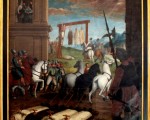
Between May 1535 and August 1540 eighteen monks from the Carthusian order were put to death for the same crime, for refusing to accept King Henry VIII as the Supreme Head of the Church.
[Read More...]
Between May 1535 and August 1540 eighteen monks from the Carthusian order were put to death for the same crime, for refusing to accept King Henry VIII as the Supreme Head of the Church.
[Read More...]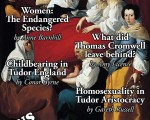
Here’s the cover for the forthcoming Tudor Life magazine. The theme for this magazine is loosely “Vulnerability” and covers an interesting range of topics as always. Thanks to all the contributors for this magazine.
[Read More...]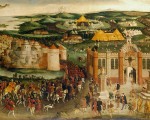
The Field of Cloth of Gold was an historic meeting between Henry VIII and Francis I of France to solidify the Treaty of London. It ran from 7th June 1520 until 24th June 1520 and was held on a field between the English stronghold of Guînes and the French town of Ardres, to solidify the Treaty of London.
[Read More...]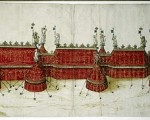
The Field of Cloth of Gold was a spectacular meeting between King Henry VIII of England and King Francis I of France. The meeting lasted from the 7th June to 24th June 1520 and was one of the most impressive, lavish meetings to ever be held between the two Kings. The meeting was held between the English stronghold of Guînes and the French town of Ardres, on a piece of land which was referred to as the Field of Cloth of Gold.
[Read More...]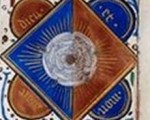
How much do you know about the badges, arms and mottoes used in the Tudor and Plantagenet eras?
Test your knowledge with this fun quiz.
[Read More...]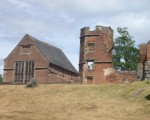
Archaeologists are starting a five-year project to reveal the secrets of Bradgate Park, the estate which was home to Lady Jane Grey and her family.
[Read More...]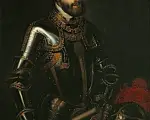
In today’s Claire Chat’s video I talk about the visit Charles V made to England in 1522, to make an alliance with Henry VIII against France, and all the pageantry and entertainment that he enjoyed.
[Read More...]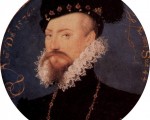
On 4th June 1550 (some sources say the 5th), Robert Dudley married Amy Robsart at the royal palace of Sheen at Richmond, near London. The marriage was attended by the then king, Edward VI.
Both Amy and Dudley were a few days short of their 18th birthdays when they got married, and the marriage was a love-match, or a “carnal marriage” as William Cecil described it, rather than an arranged union. The couple were sweethearts and very much in love, but it was not to be a happy marriage and events conspired against them.
[Read More...]
This month, historian Gareth Russell gives us a wonderful insight into the role of Importance of Christianity in the Medieval and Early Modern Period. As always, Gareth is charming and insightful with his examination of this important subject.
[Read More...]One of the curators behind 32 Londoners of the London Eye has contacted to let me know that Anne Boleyn has been chosen as one of their iconic 32 Londoners in 2015. Historian Tracy Borman, who is also Chief Curator of Historic Royal Palaces, will be talking about Anne Boleyn on 11th June and pointing out London landmarks associated with Anne.
[Read More...]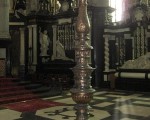
Cardinal Thomas Wolsey was patron to the Florentine scuptor Benedetto da Rovezzano (1474-1552) and commissioned him to make a lavish Renaissance style tomb for him. The project comprised a beautiful black marble sarcophagus and four bronze angels, each measuring around a metre in height, which are now known as Wolsey’s Angels.
[Read More...]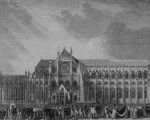
Here are some links for primary source accounts of Anne Boleyn’s coronation, and the pageants and processions that went with it, on 1st June 1533:
[Read More...]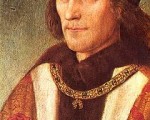
How much do you know about the Tudor and Plantagenet dynasties? Check your knowledge with this fun quiz on these kings and queens.
[Read More...]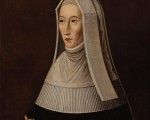
Margaret Beaufort, Countess of Richmond and Derby, and matriarch of the Tudor dynasty, was born at Bletsoe Castle in Bedfordshire on 31st May 1443. She was the daughter of Margaret Beauchamp of Bletsoe and John Beaufort, 1st Duke of Somerset, grandson of John of Gaunt, 1st Duke of Lancaster, and his mistress (and eventual wife) Katherine Swynford. Margaret was their only child. Although a 1397 act of Parliament legitimized the children of John of Gaunt and Katherine Swynford, Henry IV declared that they could never inherit the throne.
[Read More...]
Here is the transcript from last night’s live chat in the chatroom with Claire Ridgway. Thanks to all those who attended!
[Read More...]
Just a reminder that Claire Ridgway will be in the chatroom tonight (29th May) to answer questions on her recent talk on Thomas Cromwell, Henry VIII and the Fall of Anne Boleyn, or anything you want to ask her. The chat will be at midnight UK time on Friday, which works out as 1am Central European time on Saturday, 7pm in New York on Friday, 4pm in Los Angeles on Friday and 9am on Saturday in Sydney.
[Read More...]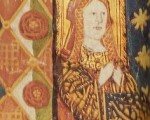
I’m busy researching Tudor entertainment, revels and pageantry at the moment and so wanted to share with you some information on the 1511 celebrations for the birth of Prince Henry, Duke of Cornwall. I hope you enjoy these vivid descriptions which might just transport you back to early 1511.
[Read More...]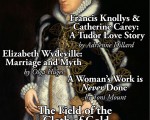
Here’s the latest magazine with all our regular items and contributors plus lots of fascinating articles about people and places from the Tudor period.
[Read More...]
In this month’s second expert talk, Claire Ridgway looks at the fall of Anne Boleyn in 1536 and examines the roles of Thomas Cromwell and Henry VIII in those bloody events. Did Thomas Cromwell plot all by himself or was he simply his master’s servant? Was Henry VIII ultimately responsible? Why did Anne Boleyn have to die?
[Read More...]
The Tower of London, or Her Majesty’s Royal Palace and Fortress, as it is officially called, is famous for being the site of much bloodshed and for being the prison of many hundreds, if not thousands, of people since it was first built, but how much do you know about it.
[Read More...]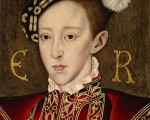
Edward VI was born on 12 October 1537 at Hampton Court Palace. He was the son of Henry VIII and his third wife Jane Seymour, who died twelve days after giving birth to him, probably of puerperal fever. He was tutored by scholars such as John Cheke, Richard Cox, Roger Ascham and Jean Belmain, and it appears that he was an intelligent child. By the age of twelve he was undertaking work on religious issues and controversies and had written a treatise about the Pope being the Antichrist.
Henry VIII, died on 28th January 1547, making Edward King Edward VI of England. Edward was only nine years old and far too young to rule over the country himself so a Council of Regency was set up, according to Henry VIII’s will. Sixteen executors had been named by Henry to act as a regency council until Edward came of age. The council members had been appointed as equals, but Edward’s uncle, Edward Seymour, took the lead and became Lord Protector of the Realm. Seymour was not content with just being Lord Protector, by 1547 he had convinced the young King to sign letters patent giving him the right to appoint members of his choosing to the Privy Council and to only consult them when he himself chose to.
[Read More...]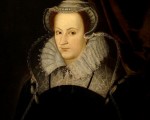
Mary, Queen of Scots, was born at Linlithgow Palace in Scotland on 8th December 1542. She was the daughter of James V of Scotland and his second wife, Mary of Guise, and the granddaughter of Margaret Tudor (Henry VIII’s sister) and James IV of Scotland. On the 14th December, when she was just six days old, Mary became Queen of Scotland after her father died of a fever. She was crowned Queen on 9th September 1543 at Stirling Castle. As Mary was a baby, James Hamilton, 2nd Earl of Arran, acted as regent until 1554 when he surrendered the regency to Mary’s mother, Mary of Guise, who acted as regent until her death in 1560.
[Read More...]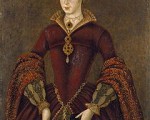
Queen Jane, commonly known as Lady Jane Grey, was born in 1537 (May or October) at Bradgate Park in Leicestershire. She was the eldest daughter of Henry Grey, Duke of Suffolk and Frances Brandon, daughter of Charles Brandon, Duke of Suffolk, and Mary Tudor, Queen of France. She was an intelligent girl and received a top-class education. Her main tutor was John Aylmer but she also met the top scholars of the day during her time living with Thomas Seymour, as his ward, and his wife Dowager Queen Catherine Parr. She also met famous reformists and humanists. She loved Greek and was a linguist with a knowledge of Latin and Hebrew, on top of the usual modern languages.
[Read More...]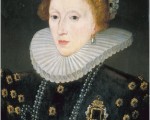
Elizabeth I was born on 7 September 1533 at Greenwich Palace. She was the daughter of Henry VIII and his second wife Anne Boleyn. Her mother was executed for alleged adultery and treason in May 1536 and within two months of her mother’s death Parliament had confirmed that Elizabeth’s parents’ marriage was invalid and that Elizabeth was illegitimate.
In 1547, following her father’s death, Elizabeth moved in with her stepmother the Dowager Queen Catherine Parr, and her husband Thomas Seymour. There, she became involved in a scandal with Seymour, who would visit Elizabeth’s chamber, dressed only in his night-gown, and proceed to tickle and stroke the teenaged girl. Eventually, Catherine arranged for Elizabeth to go and live with her good friends, Sir Anthony Denny and his wife at Cheshunt. Catherine died in September 1548, following the birth of her daughter, and Seymour was executed in March 1549 for allegedly plotting to control his nephew Edward VI and to remove his brother, Edward Seymour, Lord Protector, from power.
[Read More...]
Mary was born on 18 February 1516 at Greenwich Palace and was the daughter of Henry VIII and his first wife Catherine of Aragon. She was an intelligent girl, was known as a linguist and loved music and dancing. Mary was made illegitimate and removed from the succession after the annulment of her father’s marriage to Catherine of Aragon in 1533 and the subsequent birth of her half-sister Elizabeth, daughter of Henry VIII and Anne Boleyn. She and Elizabeth (who had been removed from the succession in 1536 after the fall of her mother) were restored to the line of succession, after their half-brother Edward, by Parliament in 1543 but Edward VI chose to remove his half-sisters from the succession as he lay dying in 1553 and chose Lady Jane Grey as his heir. Mary was forced to fight for the throne and was proclaimed queen on 19 July 1553.
[Read More...]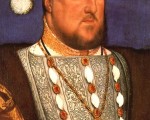
Henry VIII was born on 28 June 1491 at Greenwich Palace. He was the second son of Henry VII and Elizabeth of York, but became heir to the throne when his brother Arthur died in 1502. He inherited the throne on the death of his father in April 1509, when he was just 17 years old, and he was crowned on 24 June 1509 in a joint coronation with his new bride Catherine of Aragon, the widow of his brother.
His reign was seen as the start of a new era, after his father’s harsh regime, and Henry was very much a Renaissance prince at the start, with his charm, good looks, intelligence, love of sport and desire to fight bribery and corruption. However, he has gone down in history as a larger than life, hulk of a man who had six wives and who executed two of them, and who, according to one contemporary source, executed 72,000 during his reign. His reign is famous for the break with Rome which happened as a result of Henry VIII’s “Great Matter”, his quest for an annulment of his marriage to his first wife Catherine of Aragon. Catherine had been unable to provide Henry with a living son and Henry had come to view the marriage as contrary to God’s laws, since Catherine was his brother’s widow. He had also fallen in love with Anne Boleyn. The Pope refused to grant Henry an annulment, but Henry took matters into his own hands after reading that kings and princes were only answerable to God. The marriage was annulled in 1533, Henry VIII married Anne Boleyn and the Reformation Parliament of 1529-1536 passed the main pieces of legislation which led to the break with Rome and the English Reformation.
[Read More...]